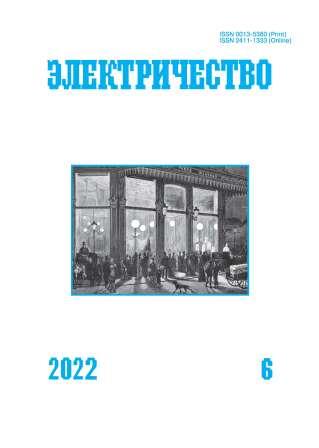Classification of Electrical Machines for Inventors and Artificial Intelligence Systems
DOI:
https://doi.org/10.24160/0013-5380-2022-6-4-19Keywords:
electric machines, classification, artificial intelligence, inventionsAbstract
The paper provides an overview of the existing classifications of electric machines and their criticism from the standpoint of logic and utilitarianism in the modern context. A modified approach to classification based on a set of features other than the generally accepted one is proposed. In particular, it is proposed not to use as the main ones such familiar features as the type of current in the network from which the machine is powered, the field and rotor rotation synchronism, and energy conversion direction. At the same time, such features as field sources and configurators, interaction force mechanisms, magnetic flux principal loop location relative to the gap plane and active parts motion direction are introduced. Pictograms are used as the main basic element of visualization and logical building block. The new approach seems to be more useful for inventors working in the field of electric machines and for application of artificial intelligence to develop new electric machine types and configurations. The classification for each of the selected features is illustrated by examples. A symbolic writing system is proposed for the new classification. Pictograms and code descriptions can be new means of the human-machine interface language.
References
2. Sasaki H., Igarashi H. Topology Optimization Accelerated by Deep Learning. – IEEE Transactions on Magnetics, 2019, vol. 55, No. 6, 7401305, DOI: 10.1109/TMAG.2019.2901906.
3. Gabdullin N., Madanzadeh S., Vilkin A. Towards End-to-End Deep Learning Performance Analysis of Electric Motors. – Actuators, 2021, 10 (2): 28, DOI:10.3390/act10020028.
4. Копылов И.П. Электрические машины. М.: Энергоатомиздат, 1986, 360 с.
5. Иванов-Смоленский А.В. Электрические машины. М.: Издательский дом МЭИ, 2004, 534 с.
6. Pyrhoenen J., Jokinen T., Hrabovcova V. Design of rotating electrical machines. John Wiley & Sons, 2008, 612 p.
7. Iowa State University [Электрон. ресурс] https://iastate.pressbooks.pub/electriccircuits/chapter/motor-characteristics (дата обращения 10.04.2022).
8. Gieras J.F., Wing M. Permanent Magnet Motor Technology: Design and Applications. New York: CRC Press, 2013, 601 p.
9. Левкин Д. Трехфазный асинхронный двигатель. Сайт: Инженерные решения. Автоматизация, электроприводы, ультразвук в статьях, анимациях и видео: просто о сложном [Электрон. ресурс] https://engineering-solutions.ru/motorcontrol/induction3ph/ (дата обращения 10.04.2022).
10. Alger P.L. Induction Machines, Their Behavior and Uses. Australia; United States: Gordon and Breach, 1995, 528 p.
11. Иванов-Смоленский А.В. Электромагнитные силы и преобразование энергии в электрических машинах. М.: Высшая школа, 1989, 312 с.
12. Шинкаренко В.Ф., Лысак В.В. Принципы структурной организации электромеханических объектов с электромагнитной инверсией. – Електромеханічні і енергозберігаючі системи, 2011, вип. 3 (15).
13. Шинкаренко В.Ф., Маляренко С.А., Тороповский А.О. Генетически допустимое разнообразие электрических машин с предельным использованием активного объема. – Електромеханічні і енергозберігаючі системи, 2011, вип. 1(13).
#
1. Barmada S., et al. Deep Learning and Reduced Models for Fast Optimization in Electromagnetics. – IEEE Transactions on Magnetics, 2020, vol. 56, No. 3, 7513604, DOI: 10.1109/TMAG.2019.2957197.
2. Sasaki H., Igarashi H. Topology Optimization Accelerated by Deep Learning. – IEEE Transactions on Magnetics, 2019, vol. 55, No. 6, 7401305, DOI: 10.1109/TMAG.2019.2901906.
3. Gabdullin N., Madanzadeh S., Vilkin A. Towards End-to-End Deep Learning Performance Analysis of Electric Motors. – Actuators, 2021, 10 (2): 28, DOI:10.3390/act10020028.
4. Kopylov I.P. Elektricheskie mashiny (Electric Machines). М.: Energoatomizdat, 1986, 360 p.
5. Ivanov-Smolenskiy A.V. Elektricheskie mashiny (Electric Machines). М.: Izdatel'skiy dom MEI, 2004, 534 p.
6. Pyrhoenen J., Jokinen T., Hrabovcova V. Design of rotating electrical machines. John Wiley & Sons, 2008, 612 p.
7. Iowa State University [Electron. resource] https://iastate.pressbooks.pub/electriccircuits/chapter/motor-characteristics (Date of appeal 10.04.2022).
8. Gieras J.F., Wing M. Permanent Magnet Motor Technology: Design and Applications. New York: CRC Press, 2013, 601 p.
9. Levkin D. Trekhfaznyy asinhronnyy dvigatel'. Sayt: Inzhenernye resheniya. Avtomatizatsiya, elektroprivody, ul'trazvuk v stat'yah, animatsiyah i video: prosto o slozhnom (Three-Phase Asynchronous Motor. Website: Engineering Solutions. Automation, Electric Drives, Ultrasound in Articles, Animation and Video: Just about the Complex) [Electron. resource] https://engineering-solutions.ru/motorcontrol/induction3ph/ (Date of appeal 10.04.2022).
10. Alger P.L. Induction Machines, Their Behavior and Uses. Australia; United States: Gordon and Breach, 1995, 528 p.
11. Ivanov-Smolenskiy A.V. Elektromagnitnye sily i preobrazovanie energii v elektricheskih mashinah (Electromagnetic Forces and Energy Conversion in Electric Machines). М.: Vysshaya shkola, 1989, 312 p.
12. Shinkarenko V.F., Lysak V.V. Printsipy strukturnoy organizatsii elektromekhanicheskih ob"ektov s elektromagnitnoy inversiey (Principles of Structural Organization of Electromechanical Objects with Electromagnetic Inversion). – Elektromekhanіchnі і energozberіgayuchі sistemi – in Ukr. (Electromechanical and Energy-Saving Systems), 2011, iss. 3 (15).
13. Shinkarenko V.F., Malyarenko S.A., Toropovskiy А.О. Geneticheski dopustimoe raznoobrazie elektricheskih mashin s predel'nym ispol'zovaniem aktivnogo ob"ema (Genetically Permissible Variety of Electric Machines with the Maximum Use of Active Volume). – Elektromekhanіchnі і energozberіgayuchі sistemi – in Ukr. (Electromechanical and Energy-Saving Systems), 2011, iss. 1(13).




